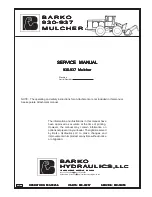Reviews:
No comments
Related manuals for ISR-6051

930
Brand: OMCA Pages: 72

930
Brand: Barko Hydraulics Pages: 92

Evoke
Brand: SALUDA MEDICAL Pages: 61

M5000
Brand: TC Electronic Pages: 2

BBT80
Brand: Bahco Pages: 131

BBT60A
Brand: Bahco Pages: 126

Blue Derma
Brand: K-LASER Pages: 70

Blue Dental
Brand: K-LASER Pages: 72

FRV 30 ME
Brand: Kärcher Pages: 88

QUAD ENVELOPE
Brand: Malekko Pages: 2

MJ2000
Brand: Major Pages: 26

Life/form SmartScope LF01142U
Brand: Nasco Pages: 2

precision flow
Brand: Vapotherm Pages: 32

EZCT
Brand: Vanguard Instruments Pages: 47

TG500
Brand: Yamaha Pages: 16

AED 3
Brand: ZOLL Pages: 48

MPS-250
Brand: A.J.Antunes Pages: 24

PTT
Brand: B&G Pages: 2

















